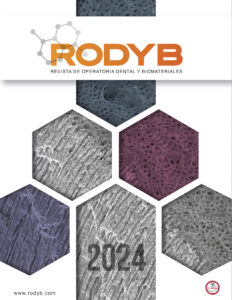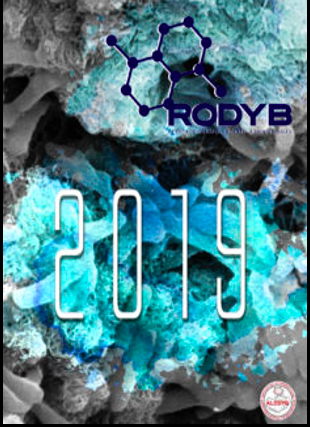Título / Title
RESINAS COMPUESTAS “BULK”: Propiedades físico-mecánicas con diferentes densidades de LED
BULK COMPOSITE RESINS: Physical-mechanical properties by different densities of LEDAutores / Autors
TATIANA CURSINO PEREIRA 1, TÂNIA MARA DA SILVA 1, LUCÉLIA LEMES GONÇALVESa, ANA FLÁVIA NUNES E REIS 1, ÉRIKA PRISCILA SIQUEIRA 1, SILVIA MARIA RIBEIRO DE ALENCAR GONÇALVES 2, SÉRGIO EDUARDO DE PAIVA GONÇALVES 1
Ver más >>
Grado de los Autores
1 Department of Restorative Dentistry, Sao Paulo State University (Unesp) - Institute of Science and Technology of São José dos Campos, São Paulo, Brazil. 2 Department of Dentistry, Federal University of Rio de Janeiro, President of the Brazilian Group of Dentistry Professors, Rio de Janeiro, Brazil.
Objetivos
Evaluar las propiedades físico-mecánicas – resistencia flexural (RF), módulo de elasticidad (ME), microdureza Knoop (KHN), grado de conversión (GC), sorción (SOR) y solubilidad (SOL) – de resinas compuestas tipo “Bulk”, frente a dos diferentes irradiancias
Resumen / Abstract
Objetivo: Evaluar las propiedades físico-mecánicas – resistencia flexural (RF), módulo de elasticidad (ME), microdureza Knoop (KHN), grado de conversión (GC), sorción (SOR) y solubilidad (SOL) – de resinas compuestas tipo “Bulk”, frente a dos diferentes irradiancias LED. Material y Métodos: Se confeccionaron muestras para cada marca de resina compuesta: Filtek Bulk Fill (3M ESPE), Tetric N-Ceram Bulk Fill (Ivoclar Vivadent) y Aura Bulk Fill (SDI), que se dividieron en dos grupos, de acuerdo con la irradiancia: 800 y 1200 mW/cm2. Las muestras fueron sometidas al ensayo de RF y ME utilizando la prueba de flexión de tres puntos. La prueba para medir la KHN se realizó utilizando una carga de 25 g durante 30 s. El GC se determinó por FTIR, antes y después de la fotoactivación. Los análisis de SOR y SOL se evaluaron según la norma ISO 4049. Los datos se sometieron a la prueba de ANOVA a dos criterios, seguida de la prueba Tukey (5%). Resultados: RF: no mostró diferencia estadísticamente significativa. ME: no hubo efecto estadísticamente significativo. KHN: resinas compuestas e interacción presentaron efectos estadísticamente significativos, observándose las medias más altas en el grupo Filtek. GC: hubo diferencia significativa entre las irradiancias. SOR y SOL: no hubo diferencias estadísticamente significativas. Conclusión: La microdureza y el grado de conversión de las resinas “Bulk-Fill” son influenciados por las características inherentes de la marca comercial y de la intensidad del LED utilizado.
The aim of this study was to evaluate the physical-mechanical properties such as flexural strength (RF), modulus of elasticity (ME), Knoop microhardness (KHN), degree of conversion (DC), sorption (SOR) and solubility (SOL) of Bulk composite resins, under different power densities LED. Material and Methods: Samples were prepared for each brand of composite resin: Filtek Bulk Fill (3M ESPE), Tetric N-Ceram Bulk Fill (Ivoclar Vivadent) and Aura Bulk Fill (SDI), and randomly divided into two groups, according to power density used for LED light curing: 800 and 1200 mW/cm2. The samples were submitted to the RF and ME by the three-point flexural test. KHN analysis was performed by 25 g load, for 30 s. DC determined by FTIR, before and after photoactivation. The SOR and SOL analyzes were evaluated according to ISO 4049. Data were submitted to two-way ANOVA, followed by Tukey test (5%). Results: RF: no statistically significant difference. ME: There was no statistically significant effect. KHN: composite resins and interaction showed a statistically significant effect, the highest mean was observed in the Filtek group. DC: there was a significant difference between irradiances. SOR and SOL: there were no statistically significant differences. Conclusion: It is concluded that the microhardness and degree of conversion of Bulk composite resins are influenced by the inherent characteristics of the commercial brand and the intensity of the LED used.
Palabras Clave / Keywords
Resinas compuestas, fotopolimerización, Bulk.
Descargar el artículo completo





